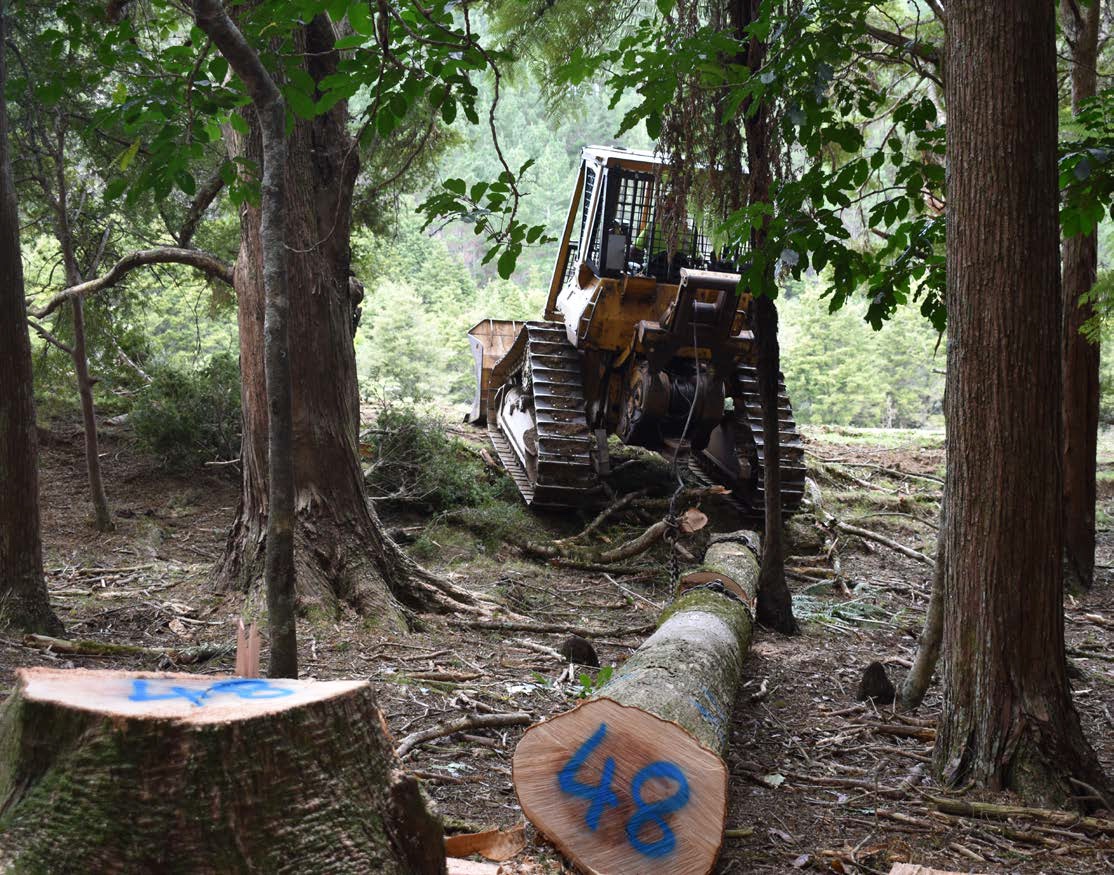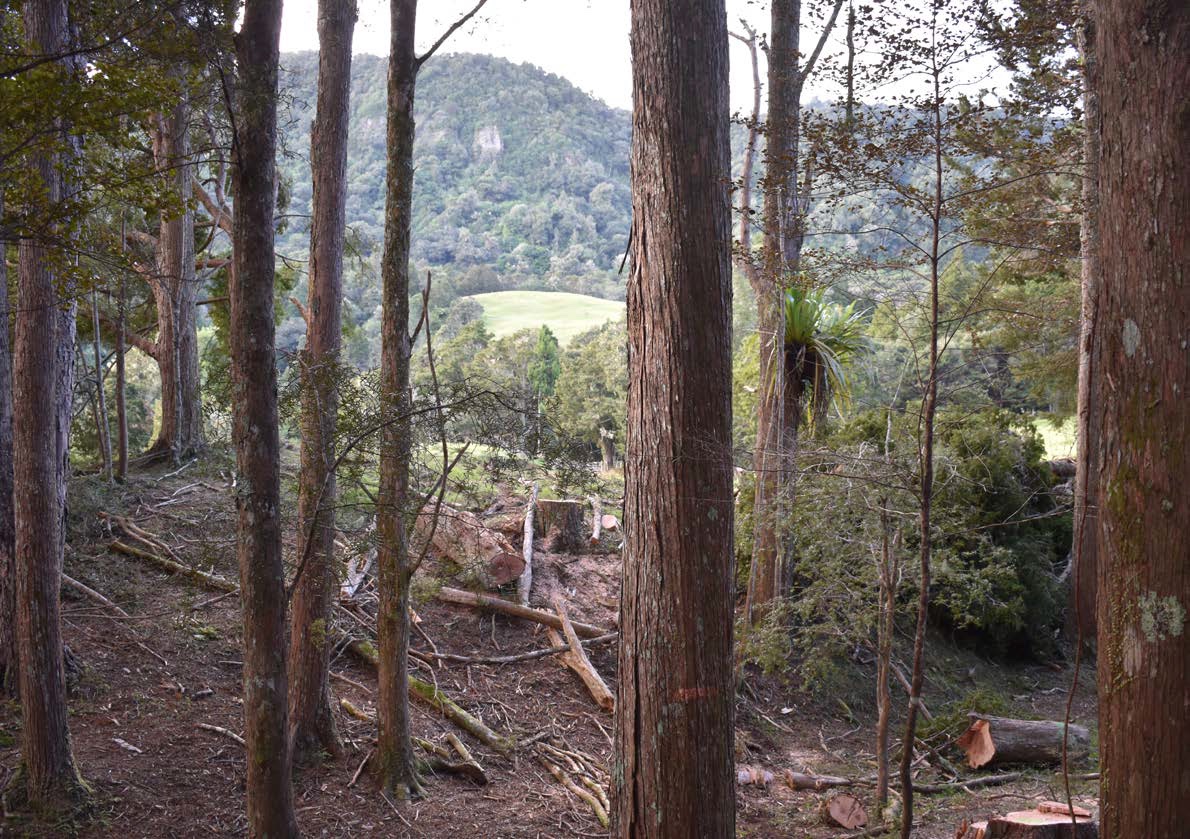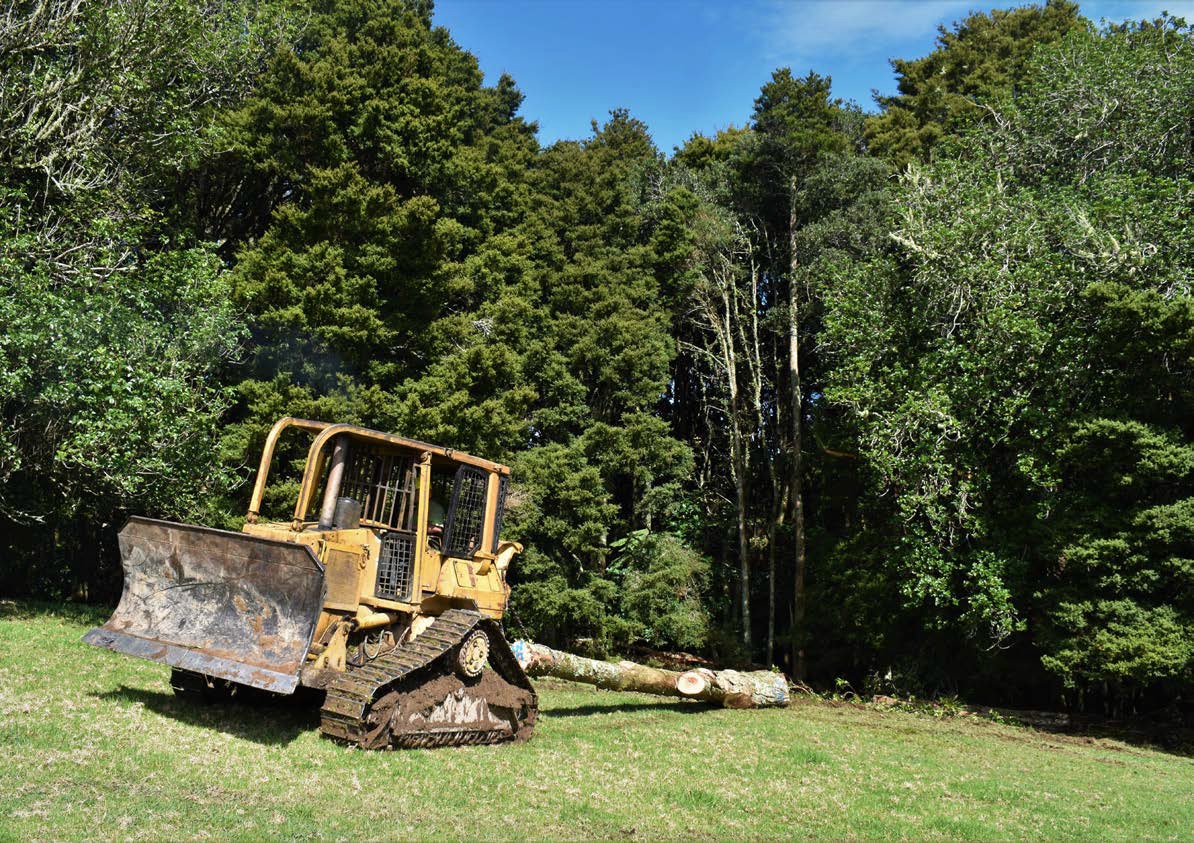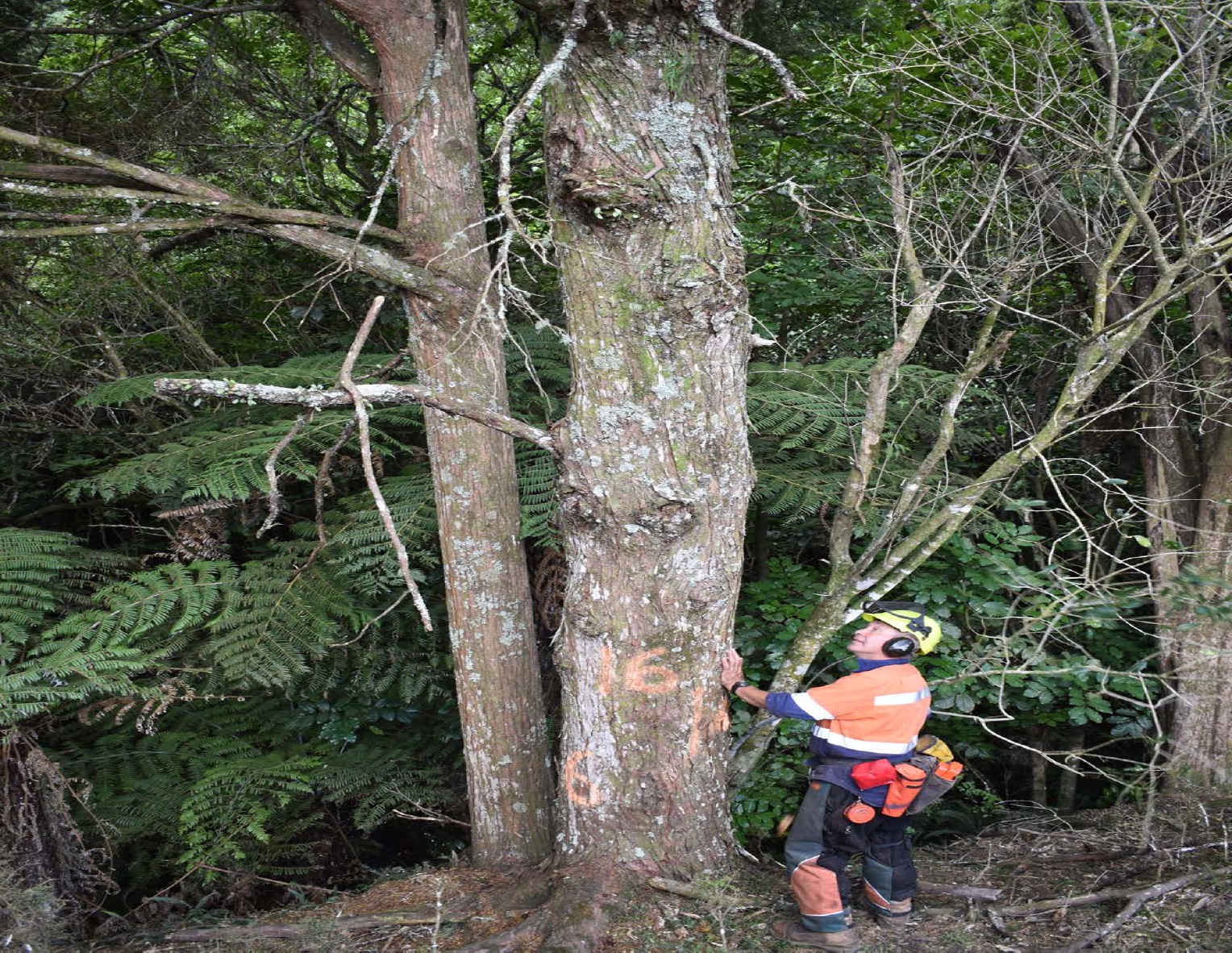Harvesting & Continuous Cover Forestry
By Paul Quinlan, Harvesting & Continuous Cover Forestry: Northland Totara Working Group newsletter, August 2019.
Focus on what is left behind!
Sustainable Forest Management (SFM) Permits and Plans approved under the Forest Act, provide for the harvesting of podocarps like tōtara by selecting and extracting single-stems, or small groups (3-5 trees), from within the forest area. The Act stipulates that trees which are predisposed to windthrow or early death should be targeted. However, in vigorous young regenerating stands of farm-tōtara few trees meet that criterion. Yet, appropriate selection of harvest trees is critical to long-term sustainability of the forest in terms of timber value, productivity, and biodiversity conservation. Taking the biggest and the best trees will ultimately run the quality of the forest down. So, what selection criteria should be used?
A European model of continuous cover forestry known as a ‘Plenterwald’ may be applicable to farm-tōtara. In short, this aims to manage a mixed species, mixed age and mixed size-class forest structure. Moreover, wherever possible harvests should ‘cull’ poorer timber trees and keep the forest well-stocked with high-quality trees throughout size-classes, from seedlings to large-diameter trees, all in close proximity to each other. So, when one is harvested, another is ready to grow into the canopy gap.


The Tōtara Industry Pilot project (TIP) adopted a similar approach to the selection of its harvest trees. A key criterion in the selection of individual trees was whether their removal would benefit the immediately surrounding residual stems in terms of their individual form and growth-rates, and in respect to the future log-grade profile of the stand generally. Other considerations included the need to fairly represent the range of tree form, size and log grades in each forest and to minimise damage to the forests and the farms. Trees with high-quality logs were also taken where there were equally as good or better adjacent trees (effecting a ‘production thinning’), or where abundant good-quality regeneration existed and leaving the harvest tree to grow on would bring little gain in its timber value.

Overall, we believe that this approach resulted in appropriate and responsible long-term forest management. However, it will be important to substantiate this through monitoring. Tōtara is a light-demanding species, so ensuring sufficient regeneration of seedlings may be a long-term issue with this management approach. Therefore, trialling other systems such as coupe-felling would be a useful comparison.
Perfecting the management of farm-tōtara is likely to be a process of continual refinement. But the focus of any responsible harvest should always be on what is left behind.


 Farm Forestry New Zealand
Farm Forestry New Zealand